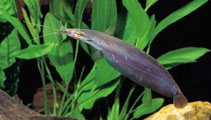http://www.fishbase.org/Summary/speciesSummary.php?genusname=Heteropneustes&speciesname=microps ---> http://52.67.158.155/Summary/speciesSummary.php?genusname=Heteropneustes&speciesname=microps
http://52.67.158.155/Summary/speciesSummary.php?genusname=Heteropneustes&speciesname=microps ---> https://fishbase.net.br/Summary/speciesSummary.php?genusname=Heteropneustes&speciesname=microps
https://fishbase.net.br/Summary/speciesSummary.php?genusname=Heteropneustes&speciesname=microps ---> https://fishbase.net.br/summary/Heteropneustes-microps.html
Heteropneustes microps : fisheries, aquarium

You can
sponsor
this page
Common name (e.g. trout)
Genus + Species (e.g. Gadus morhua)
-

-
About this page
-
Languages
-
User feedbacks
-
Citation
-
Uploads
-
Related species
-


 Upload your
photos
and
videos
Upload your
photos
and
videos
Pictures
|
Google image
 Heteropneustes microps
Heteropneustes microps
Picture by
Hippocampus-Bildarchiv
Teleostei (teleosts) >
Siluriformes
(Catfishes) >
Heteropneustidae
(Airsac catfishes)
Etymology:
Heteropneustes:
Greek, heteros = other + Greek, pneo = to breath (Ref.
45335
)
.
More on author:
Günther
.
Environment: milieu / climate zone / depth range / distribution range
Ecology
Freshwater; brackish; demersal. Tropical; 22°C - 26°C (Ref.
2060
); 8°N - 7°N
Asia: known to be endemic to Sri Lanka (Ref.
6028
), but recorded from India (Ref.
4833
,
43640
).
Size / Weight / Age
Maturity: L
m
?
range ? - ? cm
Max length : 15.0 cm TL male/unsexed; (Ref.
6028
)
Facultative air-breathing in the genus (Ref.
126274
); Adults occur mainly in swamps and similar still, often turbid waters (e.g. irrigation ditches). Form loose schools of about ten individuals of approximately the same size. Enter brackish water. Can survive temperatures up to 39.8°C (Ref.
7256
). An omnivore with nocturnal feeding habits. Oviparous, distinct pairing possibly like other members of the same family (Ref.
205
). Very easily maintained in captivity. Sympatric with
H. fossilis
which is more abundant in the type locality. Best method of catch is dewatering of small water holes during drought period.
Life cycle and mating behavior
Maturity
|
Reproduction
|
Spawning
|
Eggs
|
Fecundity
|
Larvae
Eggs of about 2 mm diameter are laid in lumps in a gravel nest. The parents guard the eggs and the youngs.
Pethiyagoda, R.
, 1991. Freshwater fishes of Sri Lanka. The Wildlife Heritage Trust of Sri Lanka, Colombo. 362 p. (Ref.
6028
)
IUCN Red List Status (Ref.
130435
)
Not Evaluated
CITES
Not Evaluated
Not Evaluated
Threat to humans
Harmless
Human uses
Fisheries: commercial; aquarium: commercial
FAO - Publication:
search
|
FishSource
|
More information
Countries
FAO areas
Ecosystems
Occurrences
Introductions
Stocks
Ecology
Diet
Food items
Food consumption
Ration
Common names
Synonyms
Metabolism
Predators
Ecotoxicology
Reproduction
Maturity
Spawning
Spawning aggregation
Fecundity
Eggs
Egg development
Age/Size
Growth
Length-weight
Length-length
Length-frequencies
Morphometrics
Morphology
Larvae
Larval dynamics
Recruitment
Abundance
BRUVS
References
Aquaculture
Aquaculture profile
Strains
Genetics
Electrophoreses
Heritability
Diseases
Processing
Nutrients
Mass conversion
Collaborators
Pictures
Stamps, Coins Misc.
Sounds
Ciguatera
Speed
Swim. type
Gill area
Otoliths
Brains
Vision
Tools
E-book
|
Field guide
|
Length-frequency wizard
|
Life-history tool
|
Point map
|
Classification Tree
|
Catch-MSY
|
Special reports
Check for Aquarium maintenance
|
Check for Species Fact Sheets
|
Check for Aquaculture Fact Sheets
Download XML
Summary page
|
Point data
|
Common names
|
Photos
Internet sources
AFORO (otoliths) |
Aquatic Commons
|
BHL
|
Cloffa
|
BOLDSystems
|
Websites from users
|
Check FishWatcher
|
CISTI
|
Catalog of Fishes
:
genus
,
species
|
DiscoverLife
|
ECOTOX
| FAO - Publication:
search
|
Faunafri
| Fishipedia |
Fishtrace
| GenBank:
genome
,
nucleotide
| GloBI |
Google Books
|
Google Scholar
|
Google
| IGFA World Record |
MitoFish
|
Otolith Atlas of Taiwan Fishes
|
PubMed
| Reef Life Survey | Socotra Atlas |
Tree of Life
| Wikipedia:
Go
,
Search
| World Records Freshwater Fishing |
Zoological Record
Estimates based on models
Phylogenetic diversity index (Ref.
82804
): PD
50
= 0.5625 [Uniqueness, from 0.5 = low to 2.0 = high].
Bayesian length-weight: a=0.00437 (0.00195 - 0.00975), b=3.08 (2.88 - 3.28), in cm total length, based on LWR estimates for this (Sub)family-body shape (Ref.
93245
).
Trophic level (Ref.
69278
): 3.3 ±0.4 se; based on size and trophs of closest relatives
Resilience (Ref.
120179
): Medium, minimum population doubling time 1.4 - 4.4 years (Assuming Fec < 10,000).
Fishing Vulnerability (Ref.
59153
): Low vulnerability (10 of 100).
Price category (Ref.
80766
):
Unknown
.
Back to Search
Random Species
Back to Top
Accessed through:
Not available
FishBase mirror site :
Laguna, Philippines
Page last modified by :
mrius-barile
|